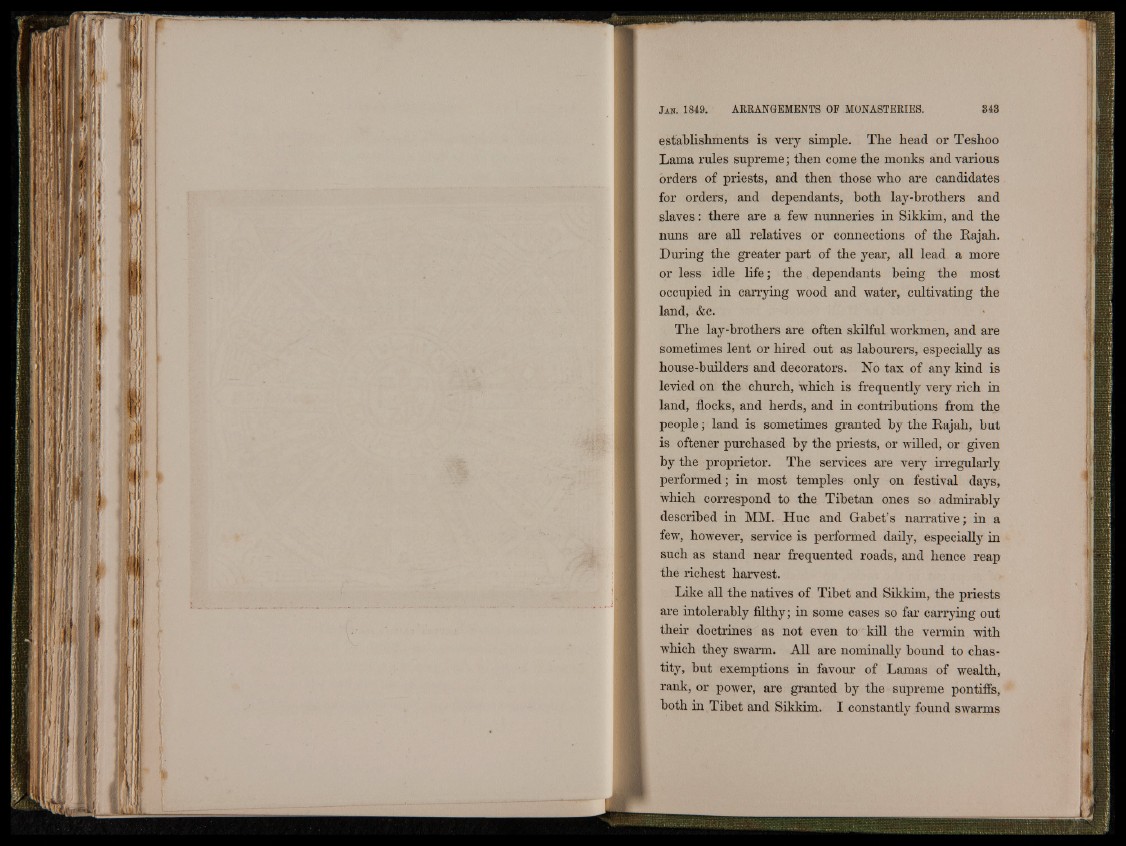
establishments is very simple. The head or Teshoo
Lama rules supreme; then come the monks and various
orders of priests, and then those who are candidates
for orders, and dependants, both lay-brothers and
slaves : there are a few nunneries in Sikkim, and the
nuns are all relatives or connections of the Rajah.
During the greater part of the year, all lead a more
or less idle life ; the dependants being the most
occupied in carrying wood and water, cultivating the
land, &c.
The lay-brothers are often skilful workmen, and are
sometimes lent or hired out as labourers, especially as
house-builders and decorators. No tax of any kind is
levied on the church, which is frequently very rich in
land, flocks, and herds, and in contributions from the
people ; land is sometimes granted by the Rajah, but
is oftener purchased by the priests, or willed, or given
by the proprietor. The services are very irregularly
performed ; in most temples only on festival days,
which correspond to the Tibetan ones so admirably
described in MM. Hue and Gabet’s narrative; in a
few, however, service is performed daily, especially in
such as stand near frequented roads, and hence reap
the richest harvest.
Like all the natives of Tibet and Sikkim, the priests
are intolerably filthy; in some cases so far carrying out
their doctrines as not even to kill the vermin with
which they swarm. All are nominally bound to chastity,
but exemptions in favour of Lamas of wealth,
rank, or power, are granted by the supreme pontiffs,
both in Tibet and Sikkim. I constantly found swarms